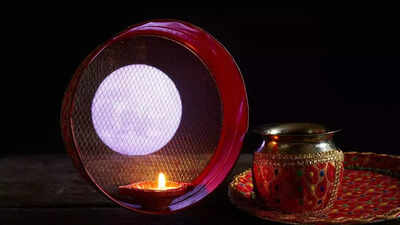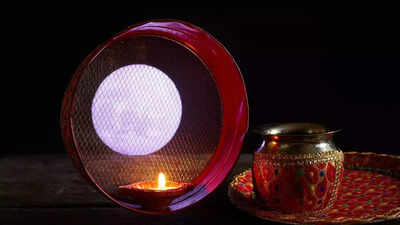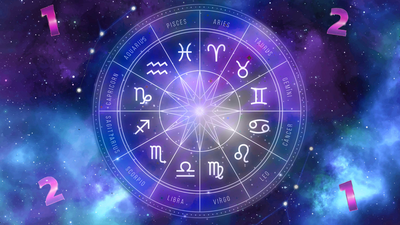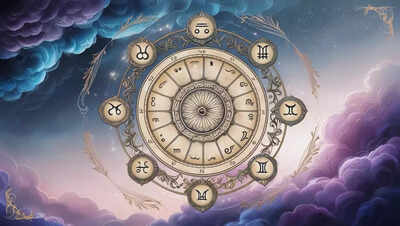Karwa Chauth 2025: How To Observe Puja Rituals If Moon Is Not Visible Due to Bad Weather

Every year, millions of married women across India and abroad look forward to the moment when the moon rises on Karwa Chauth, marking the end of their day-long fast. In 2025, the festival falls on Friday, October 10, when the moon will rise in Taurus, a sign ruled by Venus — making it a day of love, devotion, and stability. But what happens if, on this much-awaited night, the sky is covered with clouds or the moon simply refuses to appear? For those living in regions like North America, Europe, or northern India, October evenings can often bring rain, fog, or overcast skies. The good news is: your devotion doesn’t depend on visibility. In the Vedic tradition, faith, timing, and intention matter more than physical sight. Here’s how you can still perform the Karwa Chauth 2025 puja rituals meaningfully — even if the moon isn’t visible.
The Significance of Seeing the Moon
The moon represents Chandra Deva, the embodiment of calm, emotional balance, and nourishment. During Karwa Chauth, women observe a fast from sunrise until moonrise to pray for their husband’s health and long life. Traditionally, they break the fast only after sighting the moon and offering arghya (water) to it. However, in Vedic philosophy, the moon’s energy (Chandra tattva) is not confined to its physical appearance. Its presence and vibration are constant, even when hidden behind clouds. Just as you can’t see radio waves but still feel their signal, the moon’s blessings reach you through devotion and ritual intent.
What To Do If the Moon Is Not Visible
1. Determine the Moon’s Direction and Timing
If clouds block the sky, use astronomy apps to locate the moon’s position. You can face that direction during your puja. The moonrise timing for your city remains the same whether you see it or not — so once that time passes, you can proceed with your offering and prayer.
2. Offer Arghya Symbolically
Fill your karwa (earthen pot) or a small brass vessel with water, add rice grains and a few flower petals, and face the direction of the moon. Offer water three times while reciting: “Om Chandraya Namah” (Salutations to Lord Chandra, the giver of peace and clarity.) Visualize the moon glowing gently in the sky as you pour the water. Intention replaces sight here — your sincerity activates the same spiritual energy as actual moon darshan.
3. Light a Diya Toward the Sky
Place a lit diya (lamp) near your balcony or window facing east-northeast — the moon’s general direction. This diya represents the inner light of faith that burns even when the outer world is dark or cloudy. According to the Brihat Samhita, lighting a diya toward the heavens during lunar rituals strengthens the connection with Chandra Deva and amplifies your wish’s energy.
4. Offer Prayer to a Symbol of the Moon
If you can’t perform Chandra darshan, you may complete your puja by looking at a silver or white metal plate filled with milk or water, representing the moon’s reflection. You can also use a Shivlinga, as Lord Shiva governs the moon. Gently look at the reflection and say your prayer. Many families in northern India follow this method when the sky is overcast — it’s considered a valid Vedic substitute.
5. Chant Moon and Venus Mantras
Since 2025’s Karwa Chauth falls on a Friday ruled by Venus, and the moon is in Taurus (also Venus-ruled), chanting both mantras enhances harmony and love between partners. For the Moon (Chandra): “Om Som Somaya Namah” – 108 times. For Venus (Shukra): “Om Draam Dreem Droum Sah Shukraya Namah” – 108 times. These mantras calm emotional turbulence, attract peace, and balance relationships — especially when planetary visibility is obscured.
6. Perform the Ritual Together
In modern times, many couples perform the moon offering together. If the sky is cloudy, you and your partner can face the direction of the moon, hold the thali, and pray together. Sharing this moment symbolizes equality and shared intention — a modern yet spiritually valid form of observance.





